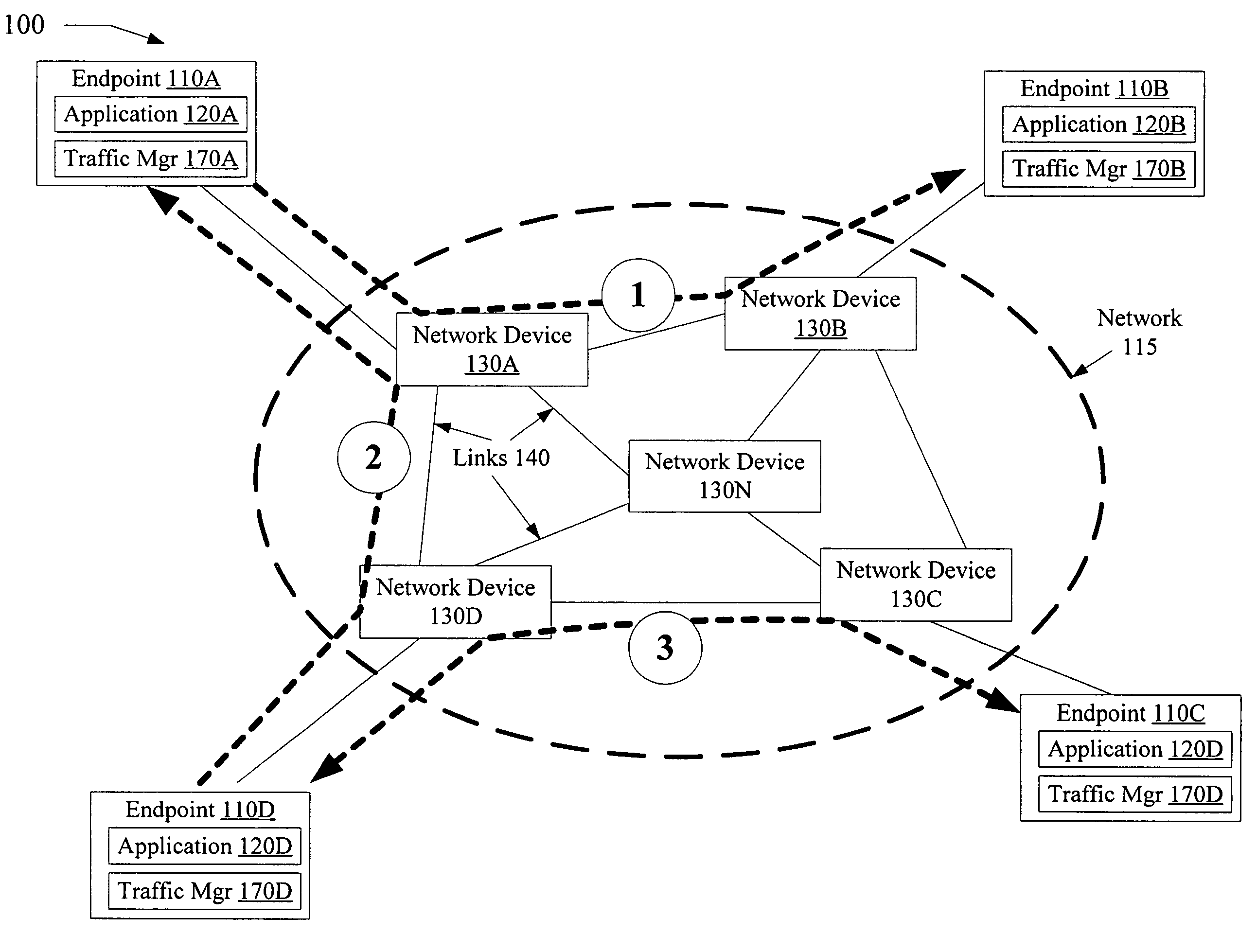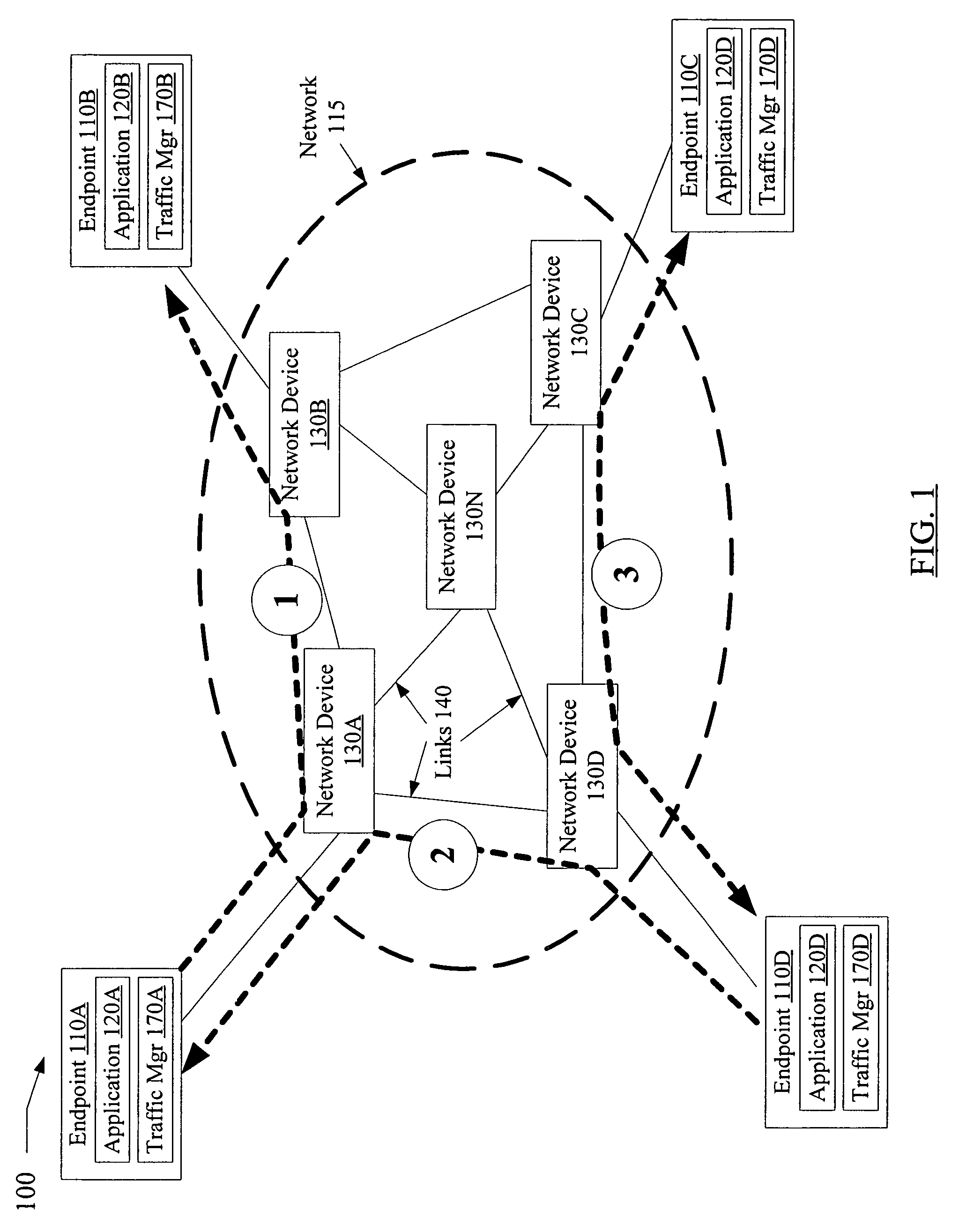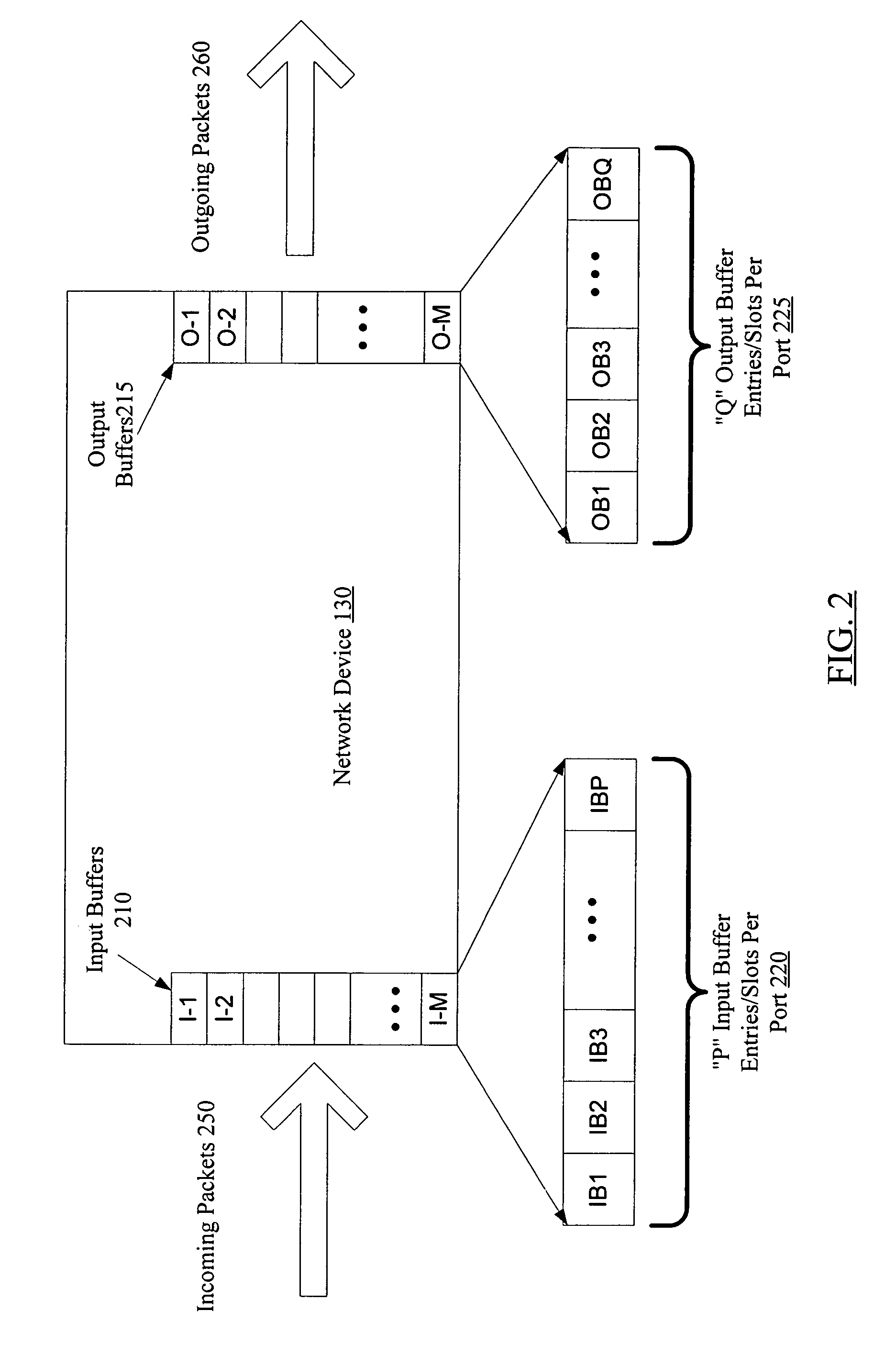Preventing network micro-congestion using send pacing based on end-to-end bandwidth
a network micro-congestion and end-to-end bandwidth technology, applied in the field of computer systems, can solve the problems of limited knowledge of specific paths, inability of many enterprises to deploy proprietary high-speed networks, and limited input and/or output buffer space of network devices, so as to prevent network micro-congestion, reduce the burst of outgoing traffic, and reduce the burst of send traffic
- Summary
- Abstract
- Description
- Claims
- Application Information
AI Technical Summary
Benefits of technology
Problems solved by technology
Method used
Image
Examples
Embodiment Construction
[0021]FIG. 1 is a block diagram illustrating a system 100 according to one embodiment. As shown, system 100 comprising a plurality of network endpoints 110 (e.g., endpoints 110A-110D) linked to a network 115 that includes a plurality of network devices 130 (e.g., network devices 130A-130N). An endpoint 110 may include any of a wide variety of devices, such as computer servers, desktops, laptops, personal digital assistants, mobile telephony devices, television set-top boxes, audio receivers, etc., that are configured to support applications 120 (e.g., application 120A at endpoint 110A, application 120B at endpoint 120B, and so on) that require network access and perform at least some bulk data transfers over the network. A wide variety of applications 120 may be supported at endpoints 110 in different embodiments, including storage management applications (e.g., distributed file systems, backup / restore, replication, and disaster recovery applications), telephony and other telecommun...
PUM
 Login to View More
Login to View More Abstract
Description
Claims
Application Information
 Login to View More
Login to View More - R&D
- Intellectual Property
- Life Sciences
- Materials
- Tech Scout
- Unparalleled Data Quality
- Higher Quality Content
- 60% Fewer Hallucinations
Browse by: Latest US Patents, China's latest patents, Technical Efficacy Thesaurus, Application Domain, Technology Topic, Popular Technical Reports.
© 2025 PatSnap. All rights reserved.Legal|Privacy policy|Modern Slavery Act Transparency Statement|Sitemap|About US| Contact US: help@patsnap.com



